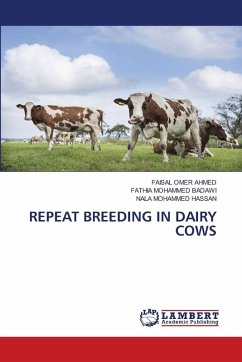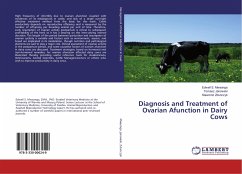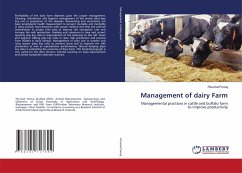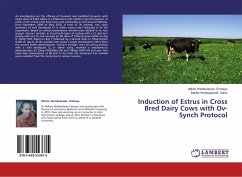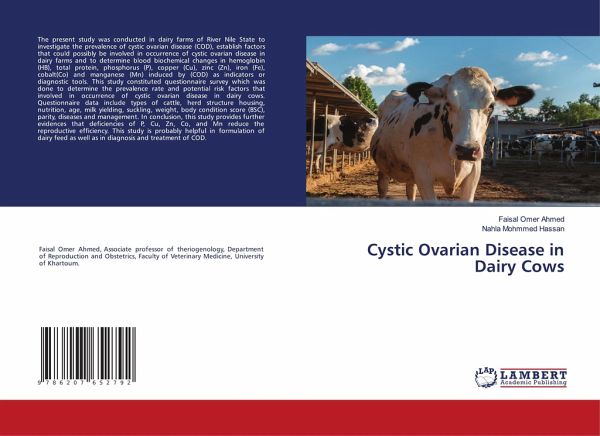
Cystic Ovarian Disease in Dairy Cows
Versandkostenfrei!
Versandfertig in 6-10 Tagen
40,99 €
inkl. MwSt.

PAYBACK Punkte
20 °P sammeln!
The present study was conducted in dairy farms of River Nile State to investigate the prevalence of cystic ovarian disease (COD), establish factors that could possibly be involved in occurrence of cystic ovarian disease in dairy farms and to determine blood biochemical changes in hemoglobin (HB), total protein, phosphorus (P), copper (Cu), zinc (Zn), iron (Fe), cobalt(Co) and manganese (Mn) induced by (COD) as indicators or diagnostic tools. This study constituted questionnaire survey which was done to determine the prevalence rate and potential risk factors that involved in occurrence of cyst...
The present study was conducted in dairy farms of River Nile State to investigate the prevalence of cystic ovarian disease (COD), establish factors that could possibly be involved in occurrence of cystic ovarian disease in dairy farms and to determine blood biochemical changes in hemoglobin (HB), total protein, phosphorus (P), copper (Cu), zinc (Zn), iron (Fe), cobalt(Co) and manganese (Mn) induced by (COD) as indicators or diagnostic tools. This study constituted questionnaire survey which was done to determine the prevalence rate and potential risk factors that involved in occurrence of cystic ovarian disease in dairy cows. Questionnaire data include types of cattle, herd structure housing, nutrition, age, milk yielding, suckling, weight, body condition score (BSC), parity, diseases and management. In conclusion, this study provides further evidences that deficiencies of P, Cu, Zn, Co, and Mn reduce the reproductive efficiency. This study is probably helpful in formulation of dairy feed as well as in diagnosis and treatment of COD.








